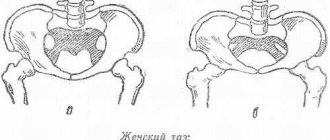Duration of pregnancy
How long does pregnancy last for women? Unfortunately, it is impossible to know the date of birth with absolute certainty. The date given by doctors is the expected date of birth .
There are cases when the actual date of birth coincides with the expected one. But all these cases are nothing more than mere coincidences.
Even if a woman knows exactly the day of conception and the date of ovulation , it is impossible to determine the speed of the sperm, how many days the egg moves through the fallopian tubes, when it is precisely implanted, how long it takes for the fetus to fully mature and when the child is ready to be born.
Since all our organisms are individual, in each case these processes proceed differently . Doctors use the average statistical standard, which is usually oriented towards.
So how many weeks does a woman’s normal pregnancy last? Scientists have calculated that in 80% of cases, 266 days pass from the moment of fertilization to the onset of labor, respectively, this is equal to 38 weeks .
But the difficulty in this calculation is that, as a rule, expectant mothers do not know the exact day of conception .
The date of the last menstruation is remembered more accurately, so this date is taken as the basis for the calculation. Thus, it turns out that 40 weeks pass from the day of the start of menstruation to the birth. Therefore, to the question: how many weeks does pregnancy last, obstetricians answer - 40 weeks (280 days) .
However, on the first day of the onset of menstruation there was no real pregnancy yet, so the period calculated in this way is approximate. It is called menstrual or gestational age .
In fact, the fetus is about two weeks younger . This term is more accurate. It is called ovulation or fertilization . To more accurately determine the date of their birth, expectant mothers should calculate the date of their ovulation.
Here you can find out how grapes are beneficial for pregnant women.
And this article describes how late childbirth can be dangerous.
Maximum duration of sick leave
By order of the Ministry of Health and Social Development of Russia dated June 29, 2011 No. 624n “On approval of the procedure for issuing certificates of incapacity for work,” by decision of the medical commission, the patient can be on sick leave for no more than 10 months. But the sick leave itself—the maximum number of days—may be longer if the treatment program provides for it. For example, the period of sick leave after surgery or injury is no more than 12 months. In this case, the patient is required to undergo regular examination (every 15 days).
Since the reasons for receiving a certificate of incapacity for work are different, let us consider (table) how many days an employee can stay at home on the basis of this document (in accordance with the order of the Ministry of Health and Social Development of Russia dated June 29, 2011 No. 624n).
Duration of sick leave depending on the basis for receiving it
| Illness, poisoning, injury (including those received at work) | Up to 15 days with the possibility of extending sick leave by a medical commission for up to 10-12 months. |
| Quarantine | For the entire quarantine period when caring for a child under 7 years old attending a preschool educational institution. For the entire period of quarantine when caring for a family member declared incompetent. For the period of isolation approved by the authorized bodies of persons who have had infectious diseases and have come into contact with them - with temporary suspension from work of citizens who have been in contact with infectious patients, or citizens identified as bacteria carriers. |
| Aftercare in sanitary resort organizations | For the entire period of follow-up treatment, but not more than 24 calendar days. For tuberculosis - for the entire period of treatment, follow-up treatment and travel to the place of recovery. |
| Caring for a sick family member | When caring for a sick child under 7 years of age - for the entire period of treatment, but not more than 60 calendar days per year. When caring for a sick child under 7 years of age due to a disease included in a special list (Order of the Ministry of Health dated February 20, 2008 No. 84n) - for the entire period of treatment, but not more than 90 calendar days per year. When caring for a child aged 7 to 15 years - up to 15 days for each case of illness, with the possibility of extension by decision of the medical commission. When caring for a sick disabled child under 15 years of age - for the entire period of treatment, but not more than 120 calendar days during the year. For the entire period of treatment when caring for a child under 15 years of age, if he:
For outpatient treatment of a sick family member over 15 years of age - up to 3 days, by decision of the medical commission - up to 7 days. |
| Adopting a child | A woman who has adopted a child under the age of 3 months is issued a certificate of incapacity for work from the date of adoption for a period of up to 70 calendar days from the date of birth of the child. The period is extended to 110 days if two or more children are adopted at the same time. |
| Pregnancy and childbirth | 140 calendar days in 30 weeks of pregnancy - if a woman is expecting one child. 194 calendar days in 28 weeks of pregnancy - if a multiple pregnancy is diagnosed. If the diagnosis of multiple pregnancy is established during childbirth, a certificate of incapacity for work for pregnancy and childbirth is issued for an additional 54 calendar days. 156 calendar days - for complicated childbirth. 156 calendar days if birth occurred between 22 and 30 weeks of pregnancy. 160 calendar days - for women living (working) in settlements exposed to radioactive contamination as a result of the accident at the Chernobyl nuclear power plant or the accident at the Mayak production association and the discharge of radioactive waste into the Techa River. |
| Prosthetics in hospital | For the entire period of prosthetics and the time of travel to the place of registration. |
| Carrying out the in vitro fertilization procedure | For the entire period of treatment (stimulation of superovulation, ovarian puncture and embryo transfer) until the result of the procedure is determined and travel to and from the medical organization. |
| Termination of pregnancy (miscarriage or abortion) | For the entire period of incapacity, but not less than 3 days. |
How to calculate the date of ovulation?
It's very hard to believe, but in every month there is only one day when it is possible to get pregnant . In very rare cases, this day occurs twice during the month.
There is a simple formula that can be used to calculate the day of ovulation without any assistance. Scientists have found that absolutely every woman ovulates 14 days before the start of her period .
If the menstrual cycle lasts 28 days, then it turns out that ovulation will occur on the 14th day after the last day of ovulation.
Agree, this calculation is very simple. However, there is one catch - this method is only suitable for those women who have a regular cycle . In addition, you can only calculate the day of ovulation if you have an accurate cycle schedule for at least six months.
Moreover, in individual cases, ovulation may occur a little earlier or a little later. But, if we take the expected date as the starting point, it turns out that pregnancy lasts 266 days (280-14=266) .
That is why doctors call a pregnancy that lasts from 266 to 294 days or from 38 to 42 weeks a normal full-term pregnancy.
When calculating, it is easy to notice that 280 days (40 weeks) are exactly 9 months .
However, obstetricians have their own month count. According to their calculations, pregnancy lasts 10 months . The fact is that the so-called lunar months, which consist of 28 days, are taken into account. This is exactly the period the cycle lasts for most women.
Is this a week?
Few people think about why there are seven days in a week. It's taken for granted now, but some civilizations used a different metric system for the calendar. For example, the Egyptians counted 10 days in one week, and among the Aztecs it was equal to 13 days.
In the modern world, the question of how many weeks in a year and how to determine time has been resolved at the interstate level. Different continents do not have an equidistant relationship to the Moon and the Sun at the same time, therefore, when it is night in the Southern Hemisphere, it is day in the Northern Hemisphere. If everyone approves their own calculation of time, their own division of the year into different weeks and months, chaos will ensue in the world.
However, despite this unity, there are some differences in different countries regarding days off. So, in Israel, Sunday is a working day, and on Saturday only those enterprises operate that simply cannot be stopped. It’s not for nothing that a seven-day week contains such a number of days; there are several reasons for this:
- To correspond to the “week” of the lunar calendar and the phases of the Month.
- According to the Bible, God created the Earth in seven days.
- In ancient Rome and India, the days of the week were given numbers and names to pay homage to the seven most significant celestial objects.
Factors influencing the length of pregnancy
First of all, the duration of gestation is influenced by the health of the expectant mother and other factors . For example:
- heredity;
- psychological condition;
- fetal development;
- intrauterine condition.
In case of prematurity, as well as post-term pregnancy, there are additional threats of unfavorable birth , which can affect the health of the fetus and mother.
These phenomena may be caused by neuroendocrine disorders, previous diseases and previous abortions. According to statistics, women who have been treated for a threatened miscarriage are more likely to carry their fetus to term. A post-term pregnancy is considered to be one whose term has crossed the line of 42 weeks .
In this article you will find out: can pregnant women eat melon?
And here you can read an article about whether pregnant women can play sports.
Events of this day
- A monument to the Little Mermaid was unveiled in Copenhagen (107 years ago)
- Russian athlete Onisim Pankratov completed his round-the-world bicycle ride in Harbin (107 years ago)
- The decision of the Council of People's Commissars of the USSR and the Central Committee of the All-Union Communist Party of Bolsheviks was published to replace the double-headed eagles on the Kremlin towers with five-pointed stars (85 years ago)
- The Molotov-Ribbentrop Pact was signed (81 years ago)
- The Soviet Red Army defeated Nazi troops in the Battle of Kursk (77 years ago)
- Soviet ballet dancer Alexander Godunov announced his decision not to return to the USSR (41 years ago)
← Previous day
Next day →
Pregnancy too long
Causes
Many expectant mothers are more afraid of a premature pregnancy than a post-term pregnancy. However, in fact, post-term pregnancy is very dangerous .
Doctors still cannot give an exact answer as to what is the reason for pregnancy being too long. It is customary to distinguish two factors of postmaturity - medical and psychological .
From a medical point of view, the cause of the problem lies in the woman’s physical unpreparedness for childbirth.
This can be explained by the following factors :
- late cervical ripening;
- muscular disorders of the uterus and myometrium;
- slow fetal development;
- hormonal problems;
- endocrine and gynecological diseases of women;
- pathology of the uterus;
- heredity.
Moreover, the duration of pregnancy also depends on the age of the mother . Most often it is carried to term during the first late pregnancy .
All causes that can be attributed to a medical aspect are identified through additional examinations . But the psychological side is quite difficult to identify.
It happens that psychologically a woman is not at all ready for childbirth . The reason for this is an unconscious fear of the birth process. A woman may fear pain or the possibility of losing the baby, slowing down the onset of the natural process.
At the first signs of post-maturity, you should consult a doctor. By performing an additional ultrasound, the specialist will be able to determine the condition of the placenta, amniotic fluid and, of course, the child.
When, after an ultrasound, traces of meconium are found in the amniotic fluid or problems with the baby’s heartbeat are detected , then, in this case, the doctor will definitely prescribe induction of labor or a cesarean section.
These appointments should never be refused, because the consequences of a post-term pregnancy can be disastrous.
What can you use a calculator for?
- To calculate penalties and delays under contracts
- How to understand the efficiency of using a resource and the deadlines for use
- How to avoid accidentally scheduling tasks on a weekend
- How much time is left until the deadline
Example:
You are an accountant. The manager has asked you in the next couple of minutes to provide data on the number of working hours that all company employees must work in February. You can easily determine the number of employees - you have the numbers in front of your eyes. But the number of hours needs to be counted... How many days are there in February? Is it a leap year? What days were weekends? How to determine the number of days of holidays?
Solution: just use our widget. You will receive all the information automatically; you do not need desktop calendars and calculators.










